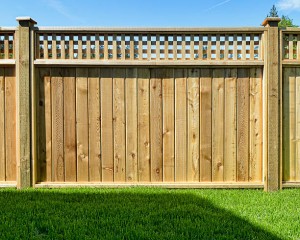Flowers are a gift and a decoration in one, making them ideal for birthdays. They also come in a variety of colors and hold different meanings.
Just like birthstones, each month is associated with a flower that represents its native blooms. Here are some tips to help you pick the perfect birthday flowers for your loved ones. Read https://thefloraleclectic.com/ to learn more.

For centuries, flowers symbolize love and affection, making them the perfect birthday gift for friends and loved ones. The practice of giving flowers for birthdays started with ancient cultures around the world, and eventually spread to different parts of the globe. Today, flower bouquets remain a popular and thoughtful way to convey love, joy, congratulations, and best wishes.
The birth flower for January is carnation, which can be found in a variety of colors and has numerous symbolic meanings. Known for their beauty and longevity, this flower is also believed to represent loyalty, admiration, and devotion. The color of the carnation carries a special significance, with red carnations indicating true love and pink carnations expressing friendship and admiration.
Chrysanthemums are the birth flower for November, and they are available in a wide array of colors. These flowers are a perfect gift for someone who is starting a new chapter in their life, as they symbolize hope and happiness. The yellow chrysanthemums symbolize gratitude and heartfelt emotions, while the orange and red variations are associated with courage and strength.
During the summer months, June babies are able to enjoy the blooms of roses and honeysuckle, two flowers that can be arranged into stunning bouquets. These vibrant flowers are also known for their mood elevating properties, helping to reduce stress levels.
For a cheerful and bright birthday, October birth flowers include gladiolus and marigolds. Gladiolus are a classic flower that represents strength and honor, while marigolds are a great choice for friends as they symbolize happiness and positivity. During the winter months, January and February born people can enjoy the beauty of snowdrops and crocuses. These flowers are known for their beauty and long-lasting nature, so they make the perfect addition to any birthday arrangement.
Often overlooked by gift-givers, birth flowers offer a way to honor and celebrate birthdays. In addition to their color and meaning, many varieties are easy to grow in the home garden.
Hydrangeas are popular because they are easy to grow and make beautiful flowers. They are a deciduous shrub that does best in a partially shaded area. They prefer well-draining soil that is rich in compost and aged manure. A pH of 5.5 to 6.0 is ideal for most hydrangeas. If the soil is acidic, apply aluminum sulfate or sulfur to bring it up to a more favorable level. The ‘Endless Summer’ type of hydrangea is an example of a hydrangea that blooms from spring to fall. Other varieties, such as ‘Nikko Blue’, are bigleaf hydrangeas that produce deep blue flowers (depending on the soil pH) from midsummer until the fall.
February’s birth flower is the violet, a purple-hued bloom that represents modesty and faithfulness. Another common flower associated with this month is the primrose, a perennial plant that symbolizes young love and can add a cheerful touch to any bouquet.
Traditionally, flowers for the month of January are red roses, a symbol of romantic love and devotion. While roses are still a popular choice, other flowers are also appropriate for January birthdays. Chrysanthemums, for instance, are a great flower for people born in this month because they represent loyalty. Additionally, paperwhites – which are also members of the Narcissus genus, from which daffodils also come — are a good option for those born in January because they represent gratitude and understanding. Other flowers that can be given to someone born in this month include irises, orchids and daisies.
Sunflowers radiate warmth and positivity, making them a perfect gift for someone celebrating their birthday in the summer and fall seasons. They symbolize admiration and loyalty, as well as being a symbol of strength and determination. These flowers are sure to brighten up any room, especially when it’s gloomy and grey outside.
Roses are the most popular birth flower, known for their many different meanings depending on the color: deep love, romance, courage and purity. They’re the ideal flower to send to your partner, friend or mum on their special day, and they also make for a great addition to any bouquet or flower arrangement.
If you have a loved one celebrating their birthday in February, consider giving them violets and primroses – these dainty flowers represent faithfulness and spiritual wisdom. Then, in March, you can give them daffodils – these cheerful blooms represent hope and renewal and are a wonderful choice for the beginning of spring.
For October’s birthdays, you can choose from marigolds and cosmos – both of which are vibrant autumn flowers. These beautiful flowers come in a wide range of colors, including yellow, red and orange. They’re perfect for anyone who loves to add a pop of color to their home and garden.
If you’re looking for a more elegant floral gift, then orchids are a good choice. These exotic flowers have a timeless beauty and are the epitome of elegance. They’re also the perfect flower for expressing your deepest emotions, and they’re often used as a sign of gratitude. For a more traditional birthday flower, you can’t go wrong with chrysanthemums – these cheerful blossoms are the symbol of joy and happiness.
In addition to offering a one-of-a-kind fragrance, gardenias also have stately white flowers and are a gorgeous gift plant for someone special. Our Happy Birthday Gardenia plant comes pre-planted in a decorative striped tin and makes the perfect gift to celebrate a loved one’s big day. These plants thrive in partial sunlight and require regular watering.
If you know a May birthday celebrant, you may want to consider lilacs or peonies for their symbolism of love and devotion. Both are a beautiful and fragrant choice for flower arrangements and bouquets, but the lilac is known as a symbol of first love while the peony represents unconditional love.
The flowers for August include gladiolus and poppy. While the gladiolus is known for its strength of character and integrity, the poppy symbolizes remembrance and sincerity. This bold bloom is often found in shades of red, pink, orange, yellow and white and can be added to a flower arrangement for a pop of color or even used as a centerpiece.
September’s birth flowers are aster and morning glory. Asters, also known as frost flowers, are available in a range of colors including pink, white, red, mauve and lilac and are symbols of all-powerful love, affection and wisdom. Morning glories, which are similar to daisies, have long thin petals with a star-like center and symbolize unrequited love.
November’s birthday flowers are chrysanthemums and paperwhite narcissus. Chrysanthemums represent friendship, happiness, longevity and well-being, while paperwhite narcissus are a symbol of hope. They are a popular choice for fall gardens and flower arrangements. In addition to being beautiful, chrysanthemums are easy to grow and will bloom all year round if planted in the proper location.
As birthdays come around, people are always looking for a unique way to celebrate their loved one. Flowers are an obvious choice, but if you’re looking to take it up a notch, consider a flower that symbolizes their birth month. Whether in a scientific or mythical sense, each month has a different flower associated with it.
January’s birthday flower is the snowdrop, which blooms in winter and represents hope and new beginnings. A more common choice is the carnation, which comes in a variety of colors and can be used to show appreciation or gratitude.
For the February birthday boy or girl, consider giving them a bouquet of primroses or violets. These delicate flowers symbolize friendship and are a beautiful way to say “thank you” to your friend or significant other for their support.
The March birthday flowers are daffodils and jonquils, which represent joy and happiness. They’re a wonderful gift for anyone in your life who has a positive attitude and can brighten up any room.
Sunflowers are another fun birthday flower to give someone. They’re vibrant and cheerful, and they symbolize warmth and loyalty. Choose from a variety of sizes and color options to match your recipient’s personality and style.
While orchids are often seen as exotic, they’re actually quite versatile and make an excellent choice for a birthday bouquet. They’re often given as a sign of elegance and beauty, so they’re perfect for the sophisticated birthday boy or girl.
If you’re looking for a more classic option, consider roses. They’re a timeless classic and can be used to express romantic love, admiration, or sympathy. Roses are also available in a wide variety of colors, so you can find the perfect bouquet to match your loved one’s taste and personality.


